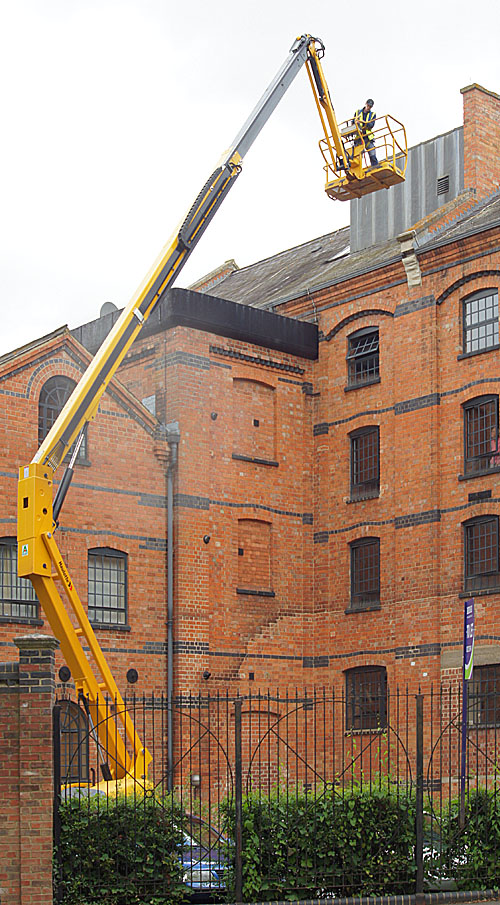|
Blisworth Mill , Blisworth, Northamptonshire, UK. All pictures are presented at relatively low resolution. There will be hundreds of pictures on this site - there is an economic limit to the webspace available. The point of this presentation is that you can see for yourself the extent of the collection and return later as the collection expands - as it surely will. Any interest in copies of a picture at a higher resolution (ie. clarity) should be directed through contacts given in the Blisworth "Round and About" parish council publication or using the comment form on the home page. In some cases the pictures are not available due to copyright restrictions. However, permission has been obtained, where possible, to include them here. Printed below each image is the photographer's name, if known. |
||
|
The mill building and the warehouse on the northern
side are listed buildings - information
available.
|
||
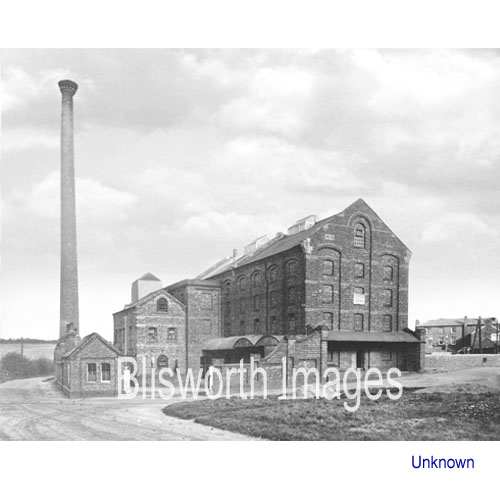 |
06-01 Blisworth Corn Mill was built in 1879 by Joseph Westley (jnr.) after the old mill and bakehouse (11-03) in the Stoke Road was damaged by fire. It was sold in 1920 so that the Westleys could concentrate on a larger scale at mills on the River Nene. The Northampton Co-op bought the mill at the time of the Grafton Estate sale and, with the purchases of farms, attempted vertical integration of their business from grower to consumer. The project failed and the Grand Union Canal Company bought the mill in about 1930 to use as a warehouse and generated much unemployment in the village at a bad time. They pulled down the chimney in c. 1934. During WWII the warehouse was used to store hundreds of tons of tinned food rations. Later owners used the warehouse as a bonded store and as a dry foods processing factory - The Pepper & Spice Company - until in 2000 it was converted to residential accommodation as 21 flats. Download Sale Inventory (0.8MB PDF) c. 1920 |
|
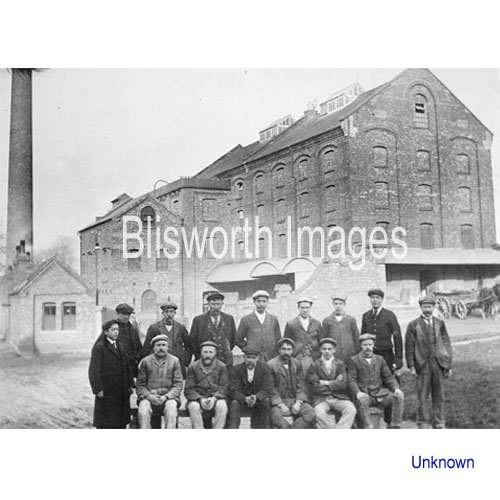 |
06-02 Date c. 1920 - Co-op mill workers.. left to right (standing) ?, J Foster, H Monk, ? White, W Pacey, Norman, A Denny, Clifford (foreman) (seated) W Kirby, A Billingham, H Townsend, F Norman, H Gibbs, ? Denny, ? Packwood,
|
|
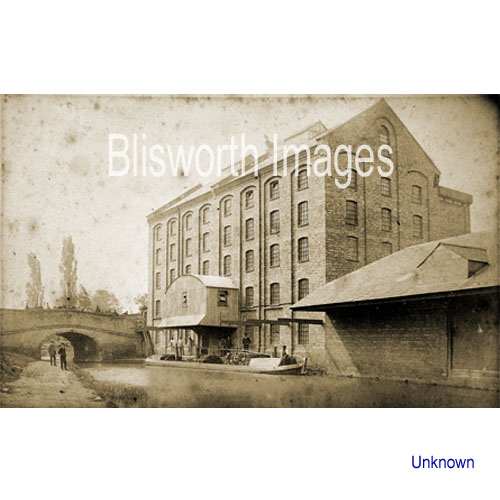 |
06-03 The date of this picture
could be as early as 1882 at which time the mill would have been up to
full production - a time worth celebrating (note the idle spectators on
the bridge!). The age of the boat suggests in any case a
considerable age for the photograph.
The bridge appears to be a single arch with no widening evident on the far side. This because of the choice of viewpoint - the rectangular profile of the bridge extension is just out of sight. |
|
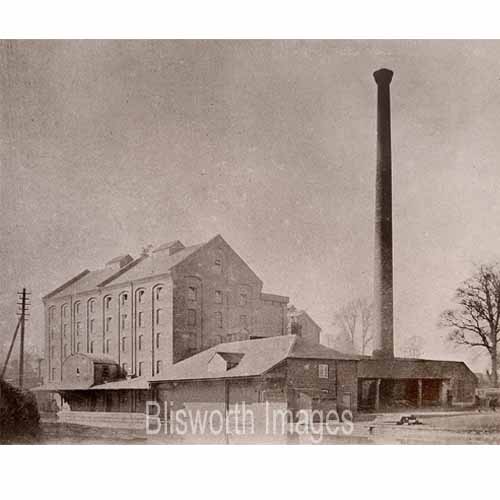 |
06-03a Date around 1895. This picture shows the most rudimentary of telegraph lines. The wharfside building in the foreground dates from the earliest days of the canal, ie. pre-Westley. It is a listed building described as a canal warehouse, circa early C19 for the Grand Junction (later Union) Canal Company built in red brick in English garden wall bond and having a tie beam roof with king-posts & struts. The canal-side in view has been named 'Pickford's Wharf. The single story warhouse could have been Pickford's but that seems a little unlikely. Pickford's operated from this area from about 1800 to 1805 as sub-tenants to Barnes, Roper & Co. Both the mill building and the warehouse are listed structures.
|
|
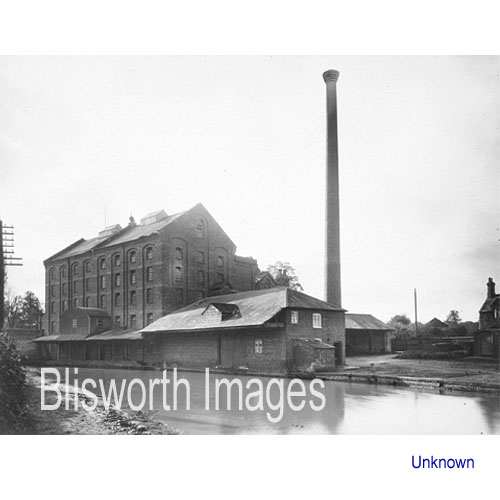 |
06-04 Date c. 1925 - 1930. The mill had new owners by this time - GUCC Company. Note the extra windows put into the subsidiary shed. The lack of activity is maybe because the mill was shut down in the late 1920s - the Northampton Cooperative Society having failed in its attempt to create a vertically integrated business from farmer to end user. | |
| Extract
from the Blisworth Book plus
some updates:
During WWII the mill was used to store hundreds of tons of canned food -
a ‘buffer store’ that was established to offset England becoming
starved if the U-boats got too much of an upper hand. As the
merchant ships were plying the Atlantic and docking in Liverpool or
Glasgow the contents were dispersed by road and canal to various sites.
A manager responsible for food movements, was hired by the UK government
and lived at Blisworth Arm - his son John Dale has written to us.
Some paper work, discovered by George Freeston, is generally headed up with a title such as “S S Empire
Lea - 560 packs of pilchards” for incoming batches and, in some cases,
a wonderfully entitled subject for outgoing - “Salmon for London”.
There were many letters exchanged about the fact that the number of
packs received was at variance with the number sent. The “Salmon for
London” correspondence rumbled on for weeks until someone admitted
that the number of damaged packs had been grossly exaggerated and,
indeed, there were some ‘inexplicable’ losses after all!
There is a story about the mill in the war years which George used to relate, “as a group of school boys from Tiffield were walking through Blisworth they leant over the bridge parapet and observed many packs of food through the windows. As the weather was particularly cold at the time they walked over the canal which would normally have ensured security and broke in. They filled their pockets with cans and made their way home. They overdid things because days later, when the thaw came, there was exposed, yard by yard from under the snow drifts, a bonus for the villagers in those rationed times - and then another and another . . . " |
||
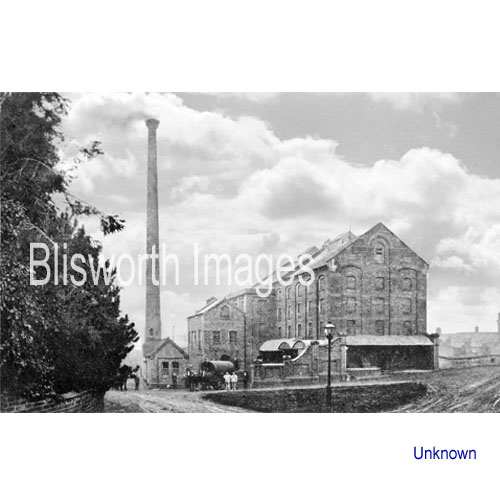 |
06-05 This image, much faded
and pocked, was found on a 1897 postcard which seems to have been
recovered from one of the mill offices - possibly just after
the GUCCo. sold the property and when George Freeston would have been
alert to memorabilia.
|
|
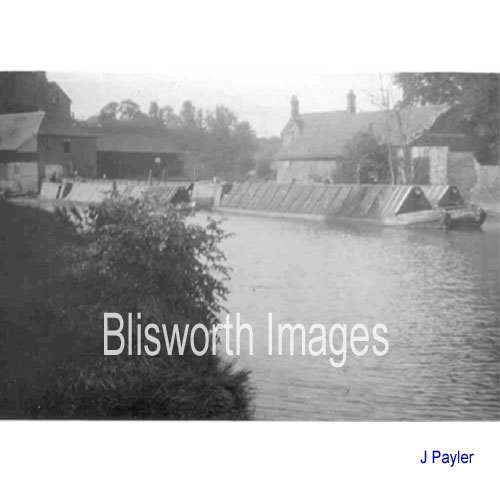 |
06-06 Date c. 1955. The wharf on the far side was a timber yard where pilings for the canal were made. Chimneys in the background are the "Rectory Cottages". Part obscuring the cottages is the "Salt-House" on the wharf-side and to the right of that are the remains of a dwelling. By 1970 the area was occupied by the hire-boat business - Blisworth Tunnel Boat Company. Censuses imply there were possibly three dwellings in total on the wharf-side c. 1881 - 1901. Most of the occupants worked for the milling business. |
|
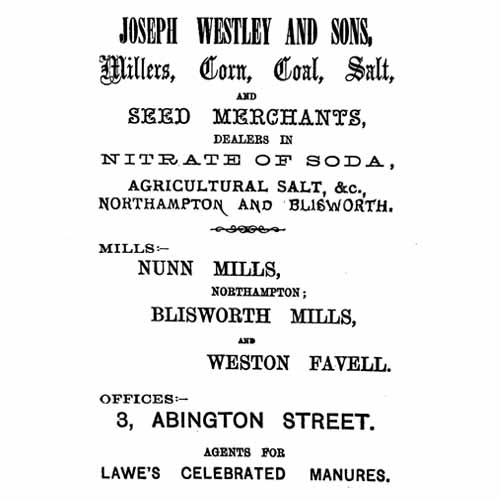 |
The above-mentioned salt-house was used to store sacked salt imported by canal and distributed with the flour as an essential ingredient for bread making. In fact Roper and Barnes Company in 1800 made rock-salt available at this short-lived inland port. | |
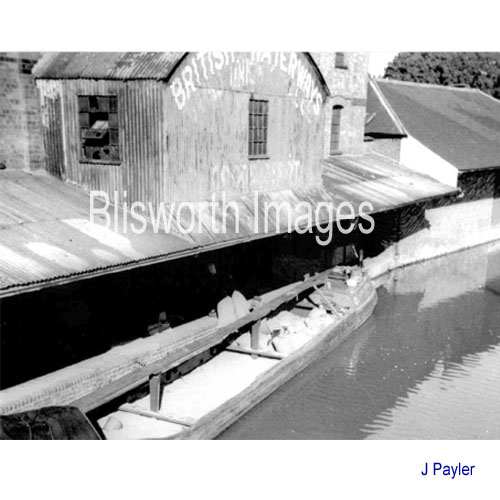 |
06-07 Pictured from West Bridge in 1959. | |
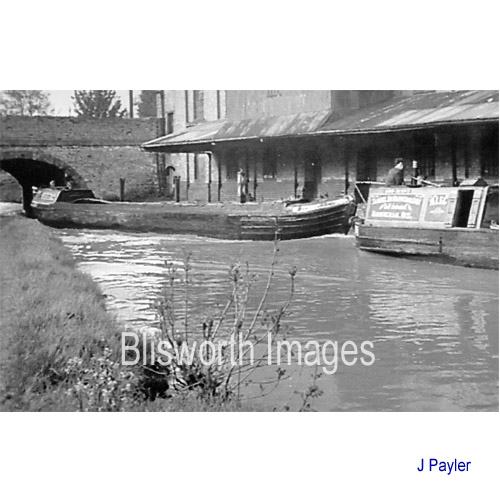 |
Another shot by Jim Payler at about the same date. | |
| 06-08 | ||
| 06-09 The hire boat yard is in the distance. | ||
| 06-15 Many in the village will recall the interlude when the mill was used as a spice factory. Run by "British Pepper and Spice Ltd" the operation was partly to import, by canal and truck, bulk spices and package them for shops and caterers. | ||
| 06-16 Produces such as these probably contributed to the not-unpleasant aroma that was wafted around the village in the 1960-70s. | ||
| 06-17 Local farmers grew crops such as sage which was in competition it seems from imports from Israel. The local sage was forcefully dried on electrically heated belts before packaging. Being still a mill, there had to be a fire sooner or later! It was a gentle and contained one in which the "Sage Machine" caught fire and filled the factory with a peculiar smoke. Local employees massed outside the building and were told to go home. | ||
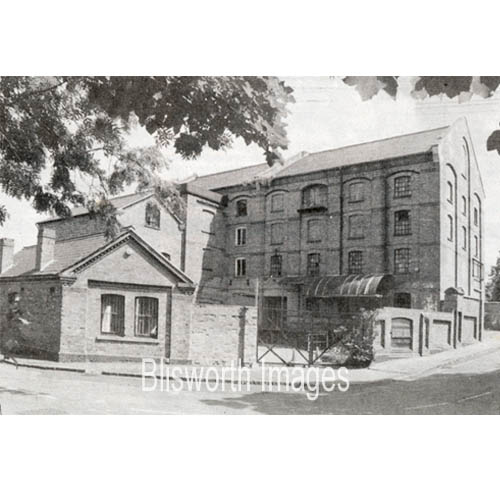 |
06-11 Appearance of a neglected mill c. 1990 prior to its conversion into 21 flats. The small building to the left can be seen in many of the earliest pictures - though to be always an office. | |
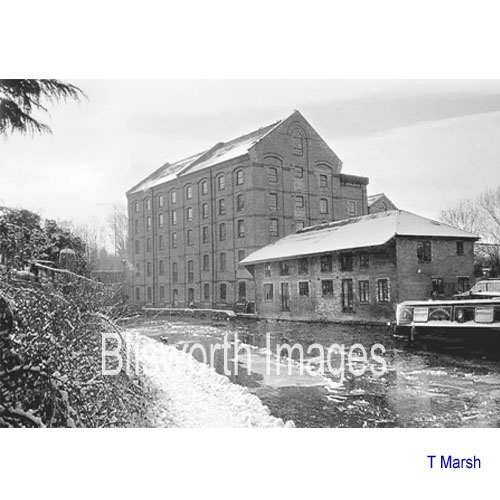 |
06-10 This picture was taken in 2000 after the Mill had been converted to 21 flats. | |
|
|
Some occupants of the flats have discovered
that some simple jobs, eg. TV aerial amplifier repair, turn out to be other than
simply for "The Mill".
Photo: R Hennessy. |
|
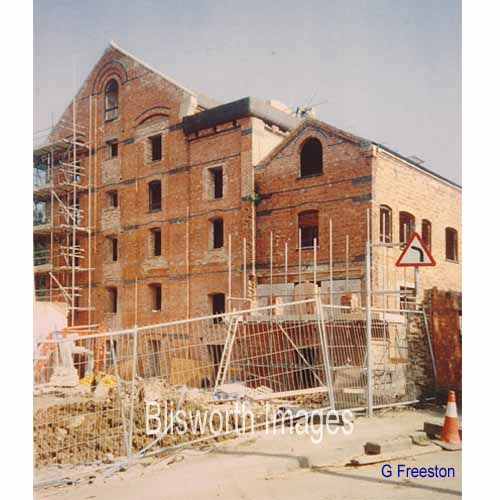 |
06-12 Photographed at the time of the conversion of the mill building into flats. Date 1999. The black band covering one part of the building is a water storage tank.
|
|
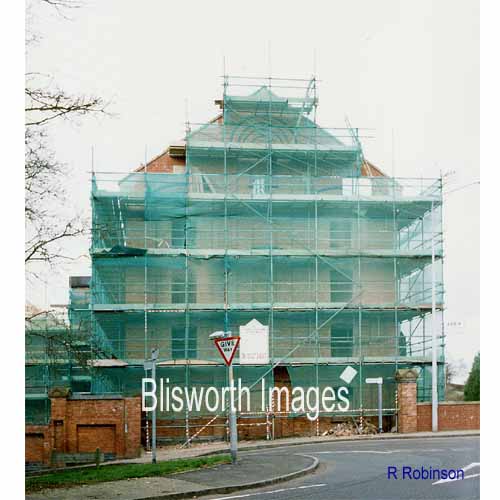 |
06-12a The gable end was worked over thoroughly to try an make uniform the old and new brickwork. The final result is an improvement because originally there were no windows on this elevation.
|
|
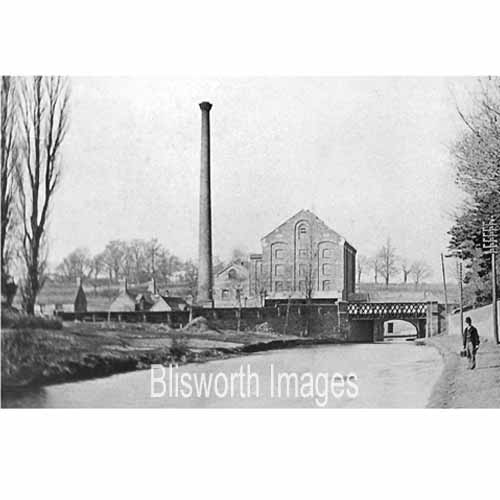 |
06-13 A charming early
picture circa 1914. Not quite visible off the extreme left is Grafton
House. The first building from the left is a part of the long
warehouse and accommodation building immediately alongside Grafton House
- it is still standing.
Next are the Rectory Cottages (note that a house has recently been inserted between the rectory cottages building and the warehouse) Next can be seen gable and one side of the office building which formed part of the boundary wall around the mill site. Note the long build up of the road leading to the bridge is evident from the long brick wall. |
|
| 06-14 This is the same view as that above, dated 2005. There is now a profusion of ash which is established that provides privacy for the residents of houses to the left. However, the trees are really "overgrown weeds" and need some effort expended on them to render them an attractive feature of the village. | ||
